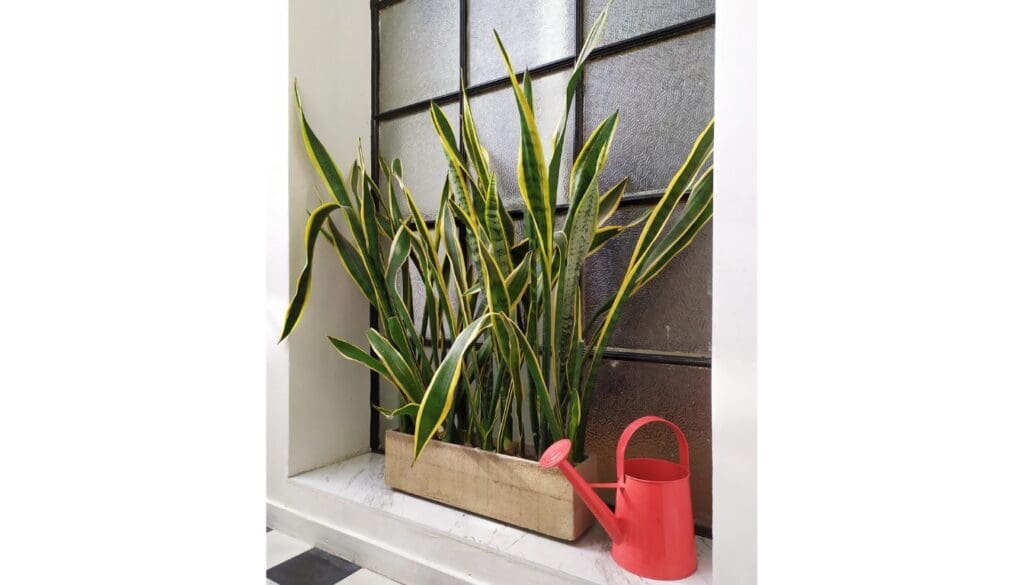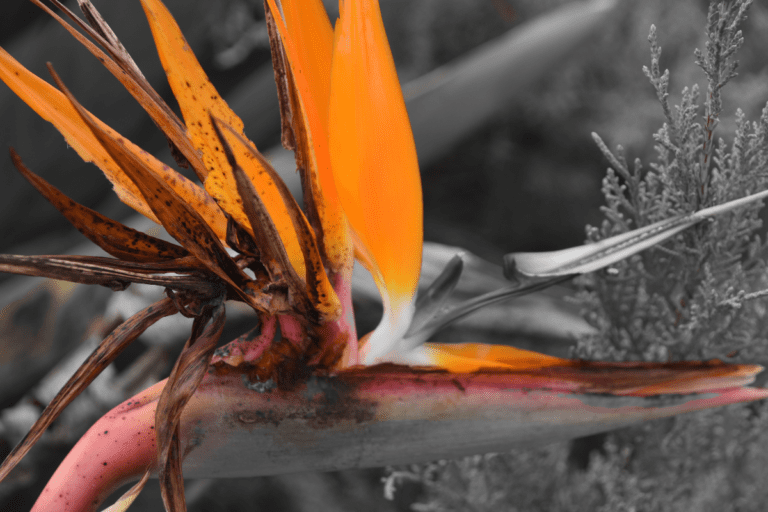What Fertilizer Is Best For Snake Plants? (What Type, How Much & More)
The snake plant species are succulents and can survive through extreme temperatures and atmospheric conditions. These plants are best for people who forget to care for their plants.
However, they do need some care during their growing season to remain healthy, and fertilization is one of them. But do snake plants need regular fertilizing, or can you get away with it? Let’s find out!
The snake plant doesn’t need a lot of fertilization, but it will boost the plants’ growth if you fertilize them during the growing season. Use a balanced 10-10-10 or 20-20-20 fertilizer every 4-6 weeks for ideal growth. It is recommended to dose half of full strength to avoid overfertilization.
Like every other plant, the Snake plant also needs basic fertilizer and feed for growth. However, being succulent, we need to take specific steps to avoid overfertilization of the plant.
Also, it is to be noted that during the fall, fertilizer use has to be reduced to half and avoided during the winter months.
In this guide, we will talk all about fertilizing your snake plant. Right from what type of fertilizer is to be used in snake plants and how much to what is my best pick. So, Let’s get started.

Please note: Simplify Plants is reader-supported. Some links in the post are affiliate links and I get a commission from purchases made through links in the post.
When to fertilize your Snake Plant?
We often get questions like, “I just got my snake plant from the nursery. When should I fertilize it?”
When the plants are in the nursery, they use a slow-release fertilizer in the soil. So by the time you get the plant home, all the goodness of the fertilizer might be gone.
Now, this is the area where we have to decide and look at the plant carefully because we do not want to overfertilize the plant.
I suggest using a light mixture of fertilizer in such a case.
I would generally recommend a light mix of fish emulsions and chelated iron to get the plant more green. Beware of overfertilization here!
It is also recommended to fertilize your snake plant only during the growing season during spring and summer. The rest of the time, your snake plant is likely dormant, so adding a fertilizer won’t help much.
Fertilizer acts as vitamins and minerals for plants. Like how we need our vitamins, the snake plants also need theirs. But again, too much of it is terrible.
How often should you fertilize a snake plant?

The Snake plant is a succulent, and now we know this. We should also note that they do not require a lot of water, and neither do they need a lot of fertilizer.
Talking about how often we should fertilize our Snake plant depends on a lot of factors.
Firstly, it all depends on the size of the plant and the pot. The larger the pot, the higher will be the use of fertilizer.
Secondly, it also depends on the type of fertilizer that we are using.
In a general suggestion, we fertilize our Snake plants once a month, only during the growing season.
The dosage should be a very dilute solution of fertilizer because we do not want to overfertilize our plant.
The mother-in-law’s tongue does not complain of a lesser feed.
However, if we use granular fertilizer like the Miracle-Gro all-purpose fertilizer, which dissolves in the soil, then twice during the growing season should be enough.
The Snake plant needs to receive the micronutrients for proper growth. For this, we will also add some compost to the soil.
Lastly, we will make a note to reduce the use of fertilizer to half the amount during the fall and stop the use of fertilizer during the winter.
Winters are the dormant season for the Snake plants, and they do not grow.
Snake plants can go for about 1-2 months without water during the winters, and hence, the use of fertilizer is never suggested.
Should I fertilize my snake plant? Why?

The snake plant stores water in the leaves, and we need to take care of the waterings. Snake plants need to go completely dry before being watered again.
As watering of the snake plant is essential, the plant’s fertilization is also of utmost importance.
To grow a healthy snake plant, we need to take care of humidity, temperature, and fertilizer.
Fertilizing houseplants is significant because they are kept in pots. And soil supplements are getting flushed away with each watering.
Some beginners choose snake plants over others because of their low maintenance and their hardy nature.
But that doesn’t mean your plant will keep growing even when you don’t feed then the right food. Your snake plant is likely to suffer from various problems due to inadequate fertilization. These include:
- Less/ no growth during the growing season
- Snake plants not getting their variegation
- Stunted growth
- Roots of the snake plants getting weaker
- Droopy leaves
- Yellow or brown color on the edge of the leaves
All the above symptoms are not restricted to the under fertilization or no fertilization of the snake plant.
It could well be because of many other reasons such as underwatering or overwatering your plant.
Light conditions also play an essential role in the proper growth of the plant.
However, if all other cultural conditions are right, then your snake plant is most likely suffering from inadequate fertilization. Thus, feeding your snake plant is equally important.
What is the best fertilizer for a snake plant?

As there is a wide range of fertilizer available out there, it is normal for a beginner to get overwhelmed. So, Today I shall simplify your doubt and help you choose the right fertilizer for your snake plant.
While choosing the fertilizer for your snake plant, the most important thing to note is the ratio of nutrients. It is also denoted as the N: P: K ratio.
You will see it on the label of the fertilizer in format 10:10:10 or 5:10:10. This means the fertilizer has Nitrogen:Phosphorous: Potassium in the ratio mentioned above.
A 10:10:10 fertilizer has 30% of these macronutrients in equal proportion, and the other 70% would be other secondary and micronutrients in smaller quantities. All these nutrients have various functions. Let us have a brief look at them:
| Nutrients | Functions |
|---|---|
| Nitrogen | -Formation of proteins -Essential for photosynthesis -Stimulate new growth |
| Phosphorous | -Key to photosynthesis -Cellular growth and division -Encourages root growth -Essential for flowering and fruiting plant |
| Potassium | -Helps regulate water intake -Boosts immune system |
| Calcium | -Reduces soil acidity -Improves nutrients absorption -Boosts immunity |
| Magnesium | -Essential for photosynthesis -Improves metabolism |
| Sulfur | -Fights winter hardiness -Synthesis of amino acids |
It is recommended to use a balanced fertilizer with a 10:10:10 or 20:20:20 ratio for your snake plant. However, never use more than ½ or ¼ of the labeled dosage.
I know you are here to pick the right one so I’ll not disappoint you by telling the science behind it only.
Jacks Classic 20-20-20 All Purpose Fertilizer is one of the most versatile and useful fertilizers I have ever used. I use it on most of my houseplants, and my plants do exceptionally well.
Now I know that it is not an organic fertilizer, but it works really well. The recommended dosage is 1tsp. with a gallon of water. However, I use 1/4th tsp.(25%) of what’s recommended, and my monstera grows like crazy.
If you want to go the organic route, then adding a handful of compost is the way to go. I strongly recommend Charlie’s Compost for your houseplants.
However, not everyone can tolerate the pungent odor that comes from the compost. Although it might not be overwhelming for everyone, some people do find it annoying, mostly because it will spread in your home where your plants are kept.
A completely organic solution is Espoma Organic Indoor Liquid Organic Plant Food. It is entirely odor-free and does its job well.
Now, this fertilizer comes in a small bottle and may not last long if you have many plants. Thus, what I do is I use organic solutions and chemical solution alternatively every 4-6 weeks during the growing season.
Things to keep in mind while fertilizing your snake plant

Snake plants are gaining popularity amongst new hobbyists because it is very easy to care for.
This sturdy plant can tolerate extreme temperatures and atmospheric conditions but is very delicate in situations of watering and fertilizer use.
A little mistake, and we might lose the plant because they are prone to root rot.
When applying water-soluble fertilizer, spread the use of water fertilizer all across the soil. Do not spread the fertilizer in a single spot.
Consistently coat the entire soil surface. Void the saucer underneath your snake plant’s pot following the procedure as we do not want the plant to be overfertilized.
Snake plants prosper in high and low light, yet their necessities change. Plants kept in low light require less fertilizer.
It is legitimate for plants kept in faint areas, yet it is furthermore clear as the seasons change and the significant length of light decreases.
Snake Plants rest during this time and like to be kept in cold conditions.
We often suggest going all-natural when using a fertilizer because it is healthy for both the plant and the environment.
The plant grows in natural conditions and takes all the nutrients from the soil in the outside environment. So, provided with the same conditions will make our plant healthy.
Growers often use seaweed solution and fish emulsions as fertilizer for the plant, which is very helpful.
If you have an aquarium or a turtle tank, then instead of throwing away the water, you may use the same water to water the plants.
That is a neat way of providing Nitrogen using a water-soluble fertilizer.
However, not everyone prefers this route because most organic and natural way of fertilizing comes with some strong odor, which is not tolerable for everyone.
Snake plants can also be provided with corn gluten as a Nitrogen supplement.
Nitrogen helps for photosynthesis and also helps in stimulating the growth of the foliage and the leaves. This plant does not want you to fertilize it with a lot of nutrients. So stick to the lower end only.
How do you fertilize a snake plant?

We can fertilize our Snake plants with these simple steps. You have to pick the correct fertilizer and follow these means:
- Pick the correct fertilizer and make sure to use less than the prescribed dosage.
- Blend the fertilizer(1/4th tsp. or around 1ml) into a gallon of water and utilize this water to fertilize the Snake plants
- On account of compost, add a handful of it at regular intervals or thereabouts.
- Ensure you water the plant after fertilizing.
How to fertilize snake plant in water?
We sometimes propagate the Snake plants in water and keep the leaves in a jar containing water.
The question that comes to one’s mind is, “Are we supposed to fertilize a snake plant in the water?”
The answer to this question is not very amicable.
Many users choose to add a bit of water-soluble fertilizer to the jar during the growing season.
However, I would advise keeping the fertilizer away. As the plant is already going through a stress period, fertilizer is not that required as it is required in the soil.
One can choose not to fertilize the Snake plants leaves kept in water. There are a catch and a slight effort though.
You might consider changing the water frequently from the jar to avoid the algae bloom.
If the water is stagnant and not changed, algae will develop, which will affect the snake plant’s growth.
Changing the water frequently allows the snake plants to absorb the right amount of nutrients from the water. Also, fresh water from the tap comes with natural minerals that our plant needs.
What happens if you over-fertilize your Snake Plant?

The excess of water and fertilizer is of the major issue for the snake plants owners.
Certain symptoms will be seen in case we have overfertilized our Snake plants. Some of them include:
- Root Rot
- Droopy and leggy plant
- Leaf burn or leaf blight
- Leaves turning yellow or brown
- Stunted growth
- The edges of the leaves turning brown
The snake plant is prone to root rot. And if there is root rot, we might want to fix the situation as soon as possible.
A root rot situation is home to many other diseases and issues.
They also invite pests and bugs, and in the case of snake plants, it will mostly be spider mites, mealybugs, and aphids.
Hence, the rule of fertilizing is to be followed; that is, Less is always better.
How to fix an over-fertilized Snake Plant?

If we see the above symptoms, we will need to act immediately. It clearly indicates that we have overfertilized our snake plant, and we need to fix it immediately.
This situation might be a bit messy, and we would not want to face it. Nevertheless, action has to be taken.
We will need to follow the below steps:
- Check whether there are any symptoms of leaf or root damage
- Trim away the yellow/brown leaves completely
- If the fertilizer is settled in the top layer of the soil, then remove it using a spoon
- While following the above process, never remove more than 25% of the soil and if an excess is removed, then consider refilling it with fresh soil
- We will need to keep the plant under running water to flush away the excess fertilizer
- Follow the above step at least three to four times
- Check the soil and if the soil does not look good, repot in a different pot
- Use standard potting soil with a mixture of cactus potting soil and compost for repotting
- Once repotted, water the plant
- Do not fertilize the plant after the repot so that there is no stunted growth.
Following these steps, we will be able to bring back our Snake plants to life. However, take care of the developing plant now.
Last Words

Fertilizing your Snake plant is essential for the healthy and colorful growth of your Snake plant.
Though the Snake plant does not demand much feed, choose to fertilize your Snake plant with 50% of the prescribed amount.
Fertilize only during the growing season with a 10:10:10 N:P: K ratio of all-purpose fertilizer, or we can also choose to go all organic.
We can also use worm castings and seaweed solution as an organic fertilizer.
Reduce the use of feed to more than 50% during the fall and avoid adding any nutrients during the winter.
Winter is the season of dormancy for most of the houseplants.
With these secret techniques, which is no more a secret now, we will see our Snake plants happy and colorful.
Source: Indoor plant care, The University of Arkansas Division of Agriculture, Snake plant profile.
Recommended Garden Supplies
| Product Image | Our Recommended Gardening Supplies | Check Offers! |
|---|---|---|
Top Top
Top
Top
Top
Top
Top
Top
Top | rePotme Houseplant and Tropical Classic Potting Soil Mix | Check Offer On Amazon |
 Top
Top
Top
Top
Top
Top
Top
Top | Espoma Organic Indoor Plant Food | Check Offer On Amazon |
 Top
Top
Top
Top
Top
Top
Top
Top | GooingTop LED Grow Light 6000K Full Spectrum Clip Plant Growing Lamp | Check Offer On Amazon |
 Top
Top
Top
Top
Top
Top
Top
Top | Soil Moisture Meter | Check Offer On Amazon |
 Top
Top
Top
Top
Top
Top
Top
Top | Govee Hygrometer Thermometer, Bluetooth Enabled! | Check Offer On Amazon |
 Top
Top | LEVOIT Humidifiers for Large Room(Best For Plants) | Check Offer On Amazon |
 Top
Top
Top
Top
Top
Top
Top
Top | Upgraded DIY Automatic Drip Irrigation Kit, 15 Potted Houseplants Support | Check Offer On Amazon |
 Top
Top
Top
Top
Top
Top
Top
Top | Stainless Steel Heavy Duty Gardening Tool Set | Check Offer On Amazon |
 Top
Top
Top
Top
Top
Top
Top
Top | Bonide Insecticidal Soap | Check Offer On Amazon |
 Top
Top
Top
Top
Top
Top
Top
Top | Bonide 32 oz Spray Neem Oil for Organic Gardening | Check Offer On Amazon |
 Top
Top
Top
Top
Top
Top
Top
Top | Garden Safe Fungicide | Check Offer On Amazon |






